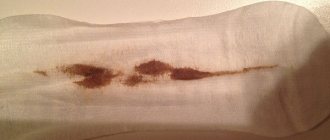How does in vitro fertilization work?
IVF is the fertilization of an egg outside a woman’s body in a laboratory followed by implantation of the embryo into the uterine cavity. The definition is quite simple, but in reality, each case requires an individual approach and ends in pregnancy on the first try in only 40% of women. The set of actions for IVF is called a protocol. Its duration is 15-20 days. During this period, a number of manipulations are carried out:
- Before IVF is prescribed, the patient is examined in detail. They check the uterus and ovaries, the level of sex hormones, the presence of contraindications, and general health.
- On day 2 of the cycle, actions according to the protocol begin. An ultrasound is performed to assess the quality of the endometrium before the procedure.
- The woman is prescribed an individual course of hormonal therapy to stimulate the ovaries. These are daily injections under the skin of the abdomen that cause several eggs to mature in one cycle.
- On days 12-14, the presence of dominant follicles is checked and a puncture is performed to collect them under general anesthesia. An ultrasonic transvaginal sensor is used to monitor the actions, and a needle is inserted through it. Each follicle is carefully emptied, then the presence of an egg is checked and collection continues on both ovaries. The procedure is performed on an outpatient basis and takes 50-60 minutes.
- The resulting eggs are fertilized under a microscope with sperm using IVF or ICSI. The finished embryos are grown in the laboratory for 5 days.
- The most promising embryo (1 or 2 as agreed with the patient) is introduced transvaginally through a special catheter. This causes absolutely no sensation and lasts a couple of minutes, after which you cannot get up for about a quarter of an hour. Sexual rest is prescribed for the next 2 weeks. The remaining embryos are sent to a cryochamber for freezing for later use if the protocol fails.
- A woman is prescribed hormonal drugs to create conditions in her body that facilitate the maintenance of pregnancy. They come in the form of vaginal creams, suppositories or tablets. They are selected strictly individually.
- On the 14th day after transfer (dpp), an analysis is performed to determine the level of hCG in the blood. This substance is produced during pregnancy, and its concentration increases rapidly every day. This analysis is the most accurate pregnancy test.
- If the embryo does not implant, the hormones are canceled and preparations are made for the next protocol.
- If the attempt is successful, maintenance medications are left or the dosage is adjusted according to the situation.
A description of the entire IVF process will help you understand when, what and why discharge occurs at different stages of artificial insemination.
Attention! According to reviews from women, it turns out that for some the first IVF protocol ended in pregnancy, for others the sixth, and for others they had to endure more than twenty.
Physiological state
Under natural conditions, when an egg is fertilized by a sperm, a zygote is formed, which moves through the fallopian tubes directly into the uterine cavity. The onset of implantation is observed from the 8th to the 14th day after conception. The only difference between in vitro fertilization is that the process of conception itself occurs in a special Petri dish, and not inside the woman. After this, embryologists cultivate the embryos until the required day and implant them into the woman. Further development of the embryo occurs under natural conditions.
IVF procedure – click to view
Almost all women experience the formation of objective symptoms of embryo implantation, which manifest themselves in an increase in body temperature, an increase in human chorionic gonadotropin (hCG is a hormone that is the main indicator of pregnancy).
Discharge during ovarian stimulation
In order for superovulation to occur—several eggs have matured—hormonal drugs are used that cause a significant increase in a special substance (FSH) in the body. Therefore, in addition to obtaining follicles, some side effects can be observed.
Normally, stimulation is accompanied by copious mucous discharge, thick and viscous, as during ovulation.
Therapy begins during menstruation. In some patients, menstruation is delayed, in others, on the contrary, it ends quickly. Sometimes there is a brown spot. This is the body's reaction to hormonal changes.
Sometimes bleeding occurs on days other than your period. Such discharge during stimulation is a bad sign; if the endometrium is rejected, then the attempt may end in failure. In addition, this is the first sign of a serious complication - ovarian hyperovulation syndrome (OHSS), which increases gradually and can disrupt an already existing pregnancy. The solution in this situation is freezing the embryos, correcting the woman’s condition and cryopreservation using the following protocol.
Possible risks
Heavy discharge, severe pain or unexplained causes of bleeding after IVF are reasons for immediate consultation with an embryologist or gynecologist. Such symptoms may indicate both an unsuccessful attempt at embryo implantation and serious pathological processes occurring in the body. Why does spotting appear - consider the most likely scenarios:
In the first trimester of IVF pregnancy, bleeding may indicate a miscarriage, missed abortion, or the development of an ectopic pregnancy
With timely treatment, the threat of miscarriage can be minimized, which will help to carry a healthy baby if a number of precautions are taken. Ovarian hyperstimulation syndrome. Hormonal therapy with a high content of estrogen can lead to the appearance of discharge, disturbances in the gastrointestinal tract, attacks of vomiting, and accumulation of fluid in the peritoneal space. Ovarian torsion
For the IVF procedure, eggs are taken from the ovaries, in their place the corpus luteum is formed. The increase in the size of the ovaries sometimes causes them to twist due to sprained ligaments. This pathology is accompanied by sharp pain in the ovarian area.
To minimize risks and have a successful pregnancy outcome, it is necessary to follow a number of preventive measures and restrictions that support the body during pregnancy. At the slightest sign of deviation from the norm, consultation with your doctor is required!
Discharge after puncture
The collection of ready-made eggs is carried out using a needle and a puncture is made, which leads to slight damage and inflammation of the tissue. Immediately after the procedure, pink discharge or mucous with streaks and clots appears. After a few hours and within 2-3 days, a brown spot can be observed. This is how the hematomas of the damaged follicle cavities are emptied.
The production of mucous membrane increases as a reaction to injury, which is why leucorrhoea is profuse. Purely theoretically, there is a possibility of infection during puncture, then yellow discharge with an unpleasant odor, fever, pain in the lower abdomen and on the side will appear.
Discharge after replanting
The introduction of an embryo into the uterine cavity is not pregnancy. The fetus must implant - attach to the wall. The success of the process depends on the hormonal balance and the condition of the endometrium.
If the attempt to attach caused the rejection of everything that is in the uterus, then the nature of the discharge after embryo transfer on the 3-5th day will change dramatically. A brown spot or something like menstruation will appear.
When everything is in order, the usual whitish mucous substances are observed in moderate quantities.
Attention! Vaginal products are sometimes prescribed for support - these are gels or suppositories with hormones. Their leakage subsequently leads to the appearance of creamy, beige or yellowish, liquid or thick substances, depending on the type of drug.
What to do?
If there is no discharge after embryo transfer, this does not mean that something went wrong. The process of embryo implantation into the uterus does not take place in one day, but in as many as 7
What is especially important is that there is no strong discharge 2 weeks after the transfer
And again about attentiveness. A woman should carefully monitor the slightest changes in the functioning of her body. The success of IVF largely depends on this. If the dangerous symptoms described above appear, immediately seek help from a doctor. Don't hesitate in this case.
Correct daily routine and rules after the transfer:
- Say no to tampons.
- You should not shower or bathe for 24 hours after the transfer.
- Do not have sexual intercourse until pregnancy is confirmed.
- Lie in bed the whole day after the transfer and rest.
- Under no circumstances should you lift heavy objects.
- Sports should also be avoided.
- You can't get sick. Try not to get too cold and maintain hygiene.
Be sure to watch this video, a woman doctor explains how to behave after the transfer:
https://youtube.com/watch?v=5jT4pDr_8NI
Preparation and monitoring of your body is what a woman must provide during IVF.
Discharge as a sign of pregnancy
An important stage is implantation, which with IVF can happen at 6-12 dpp. When the chorion villi of the embryo grow like roots into the endometrium, it is damaged. The blood slightly colors the vaginal mucus, but there is so little of it that the result is beige, yellowish, pinkish or light brown discharge. It can be applied for about a day or a little longer.
The test at this time shows a negative result, but the hCG test will give a positive answer. As a result, the IVF protocol will be considered successful or not.
Which secretion indicates the process of implantation?
Minor bleeding may indicate the implantation process, during which the fertilized egg attaches to the wall of the uterus. This is also called implantation bleeding, which is most often observed 7–12 days after the procedure.
The reason for such discharge after IVF is that the embryo, while attaching to the wall, can damage the smallest capillaries. In this case, a woman may note several variants of secretion:
- pink discharge;
- brownish mucus;
- dark cream marks on the gasket.
But it is worth remembering that such secretion cannot be abundant or have any characteristic odor. Otherwise, one may suspect various disturbances during the implantation process or the presence of concomitant pathologies.
In addition, it is important to remember that brownish or pink secretion after IVF before hCG should stop at 12 - 14 DPP. There is also a possibility of slight pain in the abdominal area, but if they are repeated very often, then the woman urgently needs to see a fertility specialist
Spotting in the first 5-6 weeks
It is very difficult to create a hormonal background to maintain pregnancy. It is impossible to choose the exact dosage, take into account all the nuances, and the drug may simply not be suitable. Therefore, with IVF, the risk of interruption is very high, especially with a cryoprotocol, because frozen embryos do not take root well.
Within 1-1.5 months, bloody spotting occurs on days when menstruation should occur or randomly. If the mucus is pale in color and is not accompanied by pain and cramps in the abdomen, then most likely this is a sign of hormonal changes.
Vaginal secretion after implantation during IVF
If pregnancy develops normally, the discharge becomes creamy with a beige or light yellow tint in very scanty quantities. This secretion confirms the normal level of progesterone, the most important hormone when carrying a child.
Abundant watery, transparent, sticky, bloody, curdled discharge are signs of various pathologies. Especially if you also experience abdominal pain, itching of the genitals, and a bad odor. The reason may be either hormonal imbalances or infections.
Attention! After IVF, as with natural fertilization, exacerbations of thrush or bacterial vaginosis often occur.
Dangerous symptoms
The appearance of bleeding on the first day after replantation is considered dangerous. If this happens, you should tell your doctor immediately, especially if the discharge is accompanied by abdominal pain. This does not mean that the protocol is doomed to fail. Various complications are possible, for example, the manifestation of ovarian hyperstimulation syndrome. But it’s still better to inform the doctor.
The appearance of green or gray-brown discharge 6-8 days after the transfer may indicate a bacterial infection. You need to see a doctor as soon as possible to get a prescription for medications to treat the infection.
A woman could have become infected in the clinic, because, unfortunately, junior medical staff do not always pay sufficient attention to the process of sterilizing instruments
curdled discharge with itching may be a sign of thrush. By the way, it is the exacerbation of thrush that often indicates the onset of pregnancy in the early stages. But you shouldn’t ignore such an unpleasant vaginal secretion and its accompanying symptoms - you definitely need to start treatment.
On days 11-14, bloody discharge with clots, black liquid discharge may be a sign of rejection of the fertilized egg, if its implantation does take place. You should call an ambulance and get to the hospital as soon as possible, where the woman will be provided with the help necessary in such situations.
There are types of discharge that are considered conditionally normal until a certain period after embryo transfer. We are talking about pink, beige, creamy discharge of a uniform consistency. They should not disturb the woman until 14 days after the transfer.
Discharge during pregnancy pathology
Any bloody fluids - brown, scarlet or pink - after implantation are considered a symptom of a threat. The woman is hospitalized and maintenance therapy is selected with the help of Utrozhestan, Duphaston and other hormonal drugs, as well as hemostatic agents.
The following conditions are probable:
- Chorionic hematoma;
- Placental abruption;
- Frozen pregnancy;
- Miscarriage.
If the situation takes a critical turn, then heavy bleeding, severe abdominal pain, dizziness and fainting occur.
When does the risk of termination disappear after IVF?
As with normal pregnancy, the most dangerous period is the 1st trimester. However, a woman who needs artificial insemination initially has health problems, therefore, according to individual indicators, special vigilance is maintained throughout the pregnancy. Until the birth itself, you should be wary of bloody discharge and abdominal pain.
In normal pregnancy, maintenance hormonal therapy will be discontinued from 12-14 weeks. If there are problems, they will leave it for some time.
What to do
If the color of the discharge changes, the first thing you need to do is notify your fertility specialist in any convenient way. Timely diagnosis will help avoid possible protocol failure, for example, in case of insufficient luteal phase support.
The most necessary examination in this case is ultrasound. With the help of research, you can find out what is happening in the uterus - implantation or rejection of the embryo. Depending on the result of the ultrasound examination, therapy is prescribed. Its type (outpatient or inpatient) and the choice of medications depend on the results obtained on ultrasound.
Attention! A change in the color of vaginal discharge from light cream to deep brown may be due to the use of hormonal drugs prescribed to support the second phase of the cycle - progesterone drugs
Discharge after IVF or ICSI - what is the difference?
These methods differ only in the method of fertilization. The standard option involves placing eggs and sperm in a Petri dish, where conception occurs naturally.
During ICSI, the protective membrane is removed from the female cell and one sperm is introduced inside using a puncture method. This is necessary in several cases:
- If the man in a couple has problems with the quality of seminal fluid. His hustlers simply cannot fertilize on their own;
- When is it necessary to conceive a child of a certain gender? Some fatal genetic diseases are transmitted only through the male or female line. Gender is determined by the sperm;
- If the father is a carrier of severe anomalies, then his cells will be tested and a healthy one will be taken for the protocol.
In the future, the development of events with IVF or ICSI is the same, so the discharge is similar.
Each fertility specialist acts differently in IVF protocols. During this period, hormonal drugs cannot be prescribed according to a standard regimen; many circumstances must be assessed and taken into account. Therefore, if several unsuccessful attempts occur, changing the specialist will help.
Which ones should you be wary of?
Pathological discharge after IVF indicates problems with the embryo or the development of bacterial microflora in the vagina. A woman should be alert if mucus from the cervical canal has acquired the following properties:
- yellow or green tint;
- unpleasant pungent odor;
- curdled consistency;
- itching, burning;
- dark brown or reddish color.
Alarming discharge during pregnancy after IVF
Greenish-yellow discharge with odor
This nature suggests that the patient is developing bacterial vaginosis, that is, dysbacteriosis of the vaginal microflora. It occurs most often in late pregnancy, but cases are also common 2 to 4 weeks after implantation during IVF. In this case, the discharge has the following symptoms:
- green, yellow or white pronounced color;
- opaque;
- sharp sour smell;
- quite abundant and watery, as if “pouring out”.
Apart from these signs, the patient does not feel any particular discomfort. If at least several of the listed qualities appear, you should consult a doctor. Neglect of this disease leads to intrauterine infections of the fetus and even missed abortion.
Curd-like discharge with itching and burning
Infectious discharge
Pregnant women, even after natural conception, are faced with diseases such as candidiasis or thrush. The appearance after IVF is due to a decrease in general immunity and taking a large number of drugs.
All this contributes to the production of mucus with low acidity in the cervical canal, and the amount of carbohydrates in the endometrium increases.
This creates favorable conditions for the development of the fungus that causes candidiasis.
Thrush discharge has the following characteristics:
- White color;
- sharp sour smell;
- consistency similar to cottage cheese;
- are released in large quantities.
Discharge from thrush
With thrush, a woman does not experience nagging or aching pain, but she may experience itching and burning, which intensifies after taking a shower. This disease can also have a negative impact on the development of the fetus and cause miscarriage. If you have the symptoms described above, you should immediately contact a gynecologist.
Dark brown and bloody discharge
This is the most alarming type, indicating serious problems after IVF. As soon as a woman notices such stains on her underwear, she should immediately seek medical help. Such discharge is most often a symptom of detachment of the fertilized egg attached to the lining of the uterus, and there is a threat of termination of pregnancy. A number of reasons lead to this:
- support with hormonal drugs is insufficient;
- an embryo with pathologies of formation;
- frozen pregnancy rejected by the body.
Bloody discharge after IVF
Such discharge has a bright color - from brown with red streaks to scarlet and red. There is no smell, the structure is liquid and quite abundant, less often “smearing”. Usually a woman feels pain and pain in the lower abdomen.
After an examination by a doctor and an ultrasound, the cause of such symptoms will be determined, and the necessary measures will be taken to support the body. The woman will be prescribed treatment in a medical facility or at home. The main thing is to follow all the recommendations of specialists.
We recommend reading about
why can an ectopic pregnancy occur after IVF?
. From the article you will learn whether this can happen at all and why, about the types and causes of the abnormal location of the ovum, symptoms, diagnostic methods and options for solving the problem, as well as when you can try again.
And here is more information about whether it is possible to do an ultrasound in the early stages of pregnancy.
There are a lot of alarming discharges during pregnancy, so any atypical manifestations and sensations cannot be ignored
It is important to understand that timely seeking medical help can save an ongoing pregnancy and avoid complications in the future. And a woman’s ability to recognize dangerous discharge and symptoms will help her see the problem in time and get out of the situation with the least consequences.










